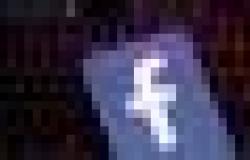The Chang’e 4 Mission, consisting of a lander and a rover, made the first touchdown on the other side of the moon on January 3, 2019. Since then, the two robots have lasted 648 days and returned countless scientific data and images from Von Kármán’s crater during the local day; The rover and the lander hibernate during the 14 day long moonlit nights.
In recognition of the mission’s research and scientific achievements, the International Astronautical Federation (IAF) selected the World Space Award to three of the leaders of Chang’e 4. The award recognizes outstanding contributions to space science, space technology, space medicine, space law or space management.Connected: The latest news on China’s space program
Yu Dengyun, Sun Zezhou and Wu Weiren received the award, with Yu, the deputy chief designer of China’s lunar exploration program, delivering a climax at the 71st International Astronautical Congress 2020 on Monday (October 12) to mark the award. The annual event took place online due to the COVID-19 pandemic.
Yu’s presentation highlighted a number of breakthroughs that made the mission possible. Among these, the first demonstrated continuous, reliable communication with the other side of the moon via the Queqiao relay satellite. Queqiao orbits a special, gravity-stable point beyond the moon, from which it maintains a constant line of sight with both ground stations on earth and the spaceship on the far side of the moon and thus enables communication.
Another important challenge for the Chang’e 4 mission was to develop the ability for an autonomous, high-precision landing in complex terrain on the far side of the moon. In particular, the landing area available to Chang’e 4 was only 5% of that of its previous mission. Chang’e 3who landed on the near side in 2013.
Yu also highlighted breakthroughs in ground control, launch systems and the Longjiang-2 Microsatellite, which included the use of an independent drive to enter lunar orbit, and amazingly Illustration of a solar eclipse in South America from the moon. Yu also revealed that the first thermoelectric radioisotope generator developed in China was used for the mission and performed well.
In addition to the technological breakthroughs, Yu discussed the mission’s scientific highlights, including the findings into the lunar underground Structure with a penetrating radar, possible radiation doses Astronauts get on the moon and the composition of the materials discovered by the rover; The mission is also performing unprecedented low frequency radio astronomy measurements.
The Chang’e 4 robots started theirs 23. Mondtag of activities over the weekend. The Yutu 2 rover resumed operation on October 10, and the lander followed on October 11.

Yutu 2 will continue its journey northwest of the landing site and aim at a rock about 30 centimeters in size at the edge of a nearby crater for analysis with a spectrometer. The rover used this instrument to analyze a number of specimens in the Von Kármán crater, which is particularly causing a stir discovered an impact melt breccia, originally known as “yellowish. “
China’s lunar exploration program published a seventh batch of scientific data from the October 9 mission, including data from the lander’s low frequency astronomy instrument and the Yutu 2 rover’s radar, spectrometer, and panoramic camera.

The Chang’e 4 mission involved thousands of scientists and engineers in China, as well as payload contributions from Germany, Sweden, the Netherlands and Saudi Arabia. Russia contributed radioisotope batteries to keep the spacecraft warm during the deep cold of the moonlit night, while Argentina assisted in assisting the ground station.
Chang’e 4 was originally a backup for Chang’e 3, which successfully landed in Mare Imbrium in 2013. The mission’s lander and one of its scientific payloads will remain operational thereafter almost 7 years on the lunar surface.
follow us on Twitter @Spacedotcom and on Facebook.
These were the details of the news China’s lunar mission robots wake up to a 23rd lunar day... for this day. We hope that we have succeeded by giving you the full details and information. To follow all our news, you can subscribe to the alerts system or to one of our different systems to provide you with all that is new.
It is also worth noting that the original news has been published and is available at de24.news and the editorial team at AlKhaleej Today has confirmed it and it has been modified, and it may have been completely transferred or quoted from it and you can read and follow this news from its main source.


